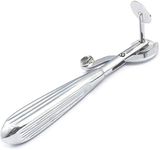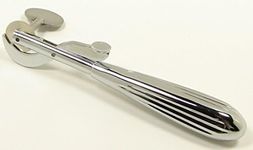Buying Guide for the Best Surgical Ring Cutters
Choosing the right surgical ring cutter is crucial for ensuring safety and efficiency during medical procedures. A surgical ring cutter is a specialized tool used to safely remove rings from fingers in emergency situations. When selecting a surgical ring cutter, it's important to consider several key specifications to ensure you get the best fit for your needs. Understanding these specifications will help you make an informed decision and choose a tool that meets your requirements effectively.Blade MaterialThe blade material of a surgical ring cutter is important because it determines the tool's durability and cutting efficiency. Common materials include stainless steel and tungsten carbide. Stainless steel blades are corrosion-resistant and provide a good balance of sharpness and durability, making them suitable for general use. Tungsten carbide blades are harder and stay sharp longer, making them ideal for cutting through tougher materials like titanium rings. Choose a blade material based on the types of rings you expect to encounter most frequently.
Handle DesignThe handle design of a surgical ring cutter affects the comfort and control during use. Ergonomically designed handles reduce hand fatigue and provide a better grip, which is important during prolonged procedures. Handles with non-slip grips are particularly useful in maintaining control, especially in emergency situations. Consider the handle design that feels most comfortable and secure in your hand to ensure ease of use and precision.
Cutting MechanismThe cutting mechanism of a surgical ring cutter determines how the tool operates. There are manual and electric ring cutters. Manual ring cutters require physical effort to operate and are typically more affordable and portable. Electric ring cutters, on the other hand, offer ease of use and can cut through rings more quickly and with less effort, making them suitable for high-volume or emergency settings. Choose a cutting mechanism based on the frequency and urgency of use in your practice.
Safety FeaturesSafety features in a surgical ring cutter are crucial to prevent injury to the patient and the user. Look for cutters with protective guards that shield the skin from the blade during cutting. Some models also have adjustable blade depths to control how deep the blade cuts, reducing the risk of accidental injury. Prioritize safety features that enhance the protection and well-being of both the patient and the operator.
Size and PortabilityThe size and portability of a surgical ring cutter are important for ease of storage and transport. Compact and lightweight cutters are easier to carry and store, making them ideal for mobile medical units or emergency kits. Larger cutters may offer more robust features but can be less convenient to transport. Consider where and how you will be using the cutter to determine the appropriate size and portability for your needs.













